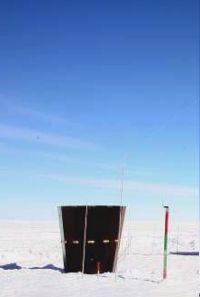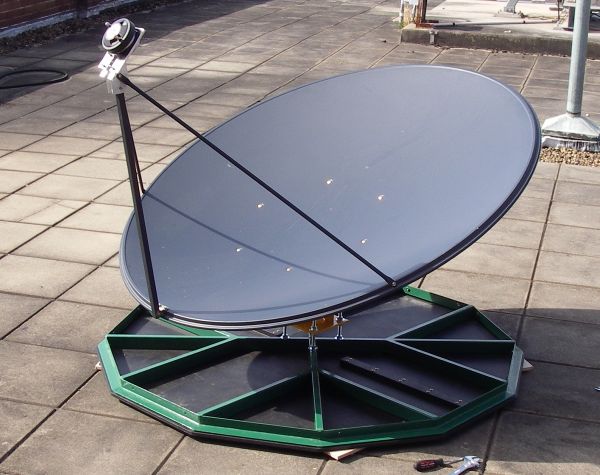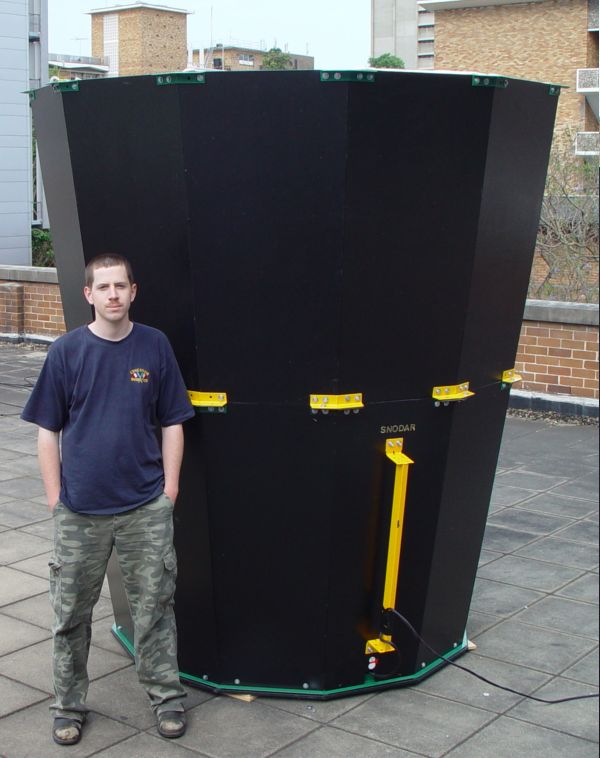Snodar

Snodar 1 at Dome A
A new site-testing instrument, Snodar (Surface layer NOn-Doppler Acoustic Radar), is designed to measure the height and intensity of the atmospheric boundary layer on the Antarctic plateau. The nature of the atmospheric boundary layer above the Antarctic plateau is of interest both to atmospheric scientists and to astronomers wishing to plan future optical telescopes. Snodar works by sending an intense acoustic pulse into the atmosphere and listening for backscatter off inhomogeneities resulting from temperature gradients and wind shear. The theory of operation is very similar to that of the well known underwater sounding techniques of SONAR.
We obtained a week of data in 2008. In 2009 we deployed two Snodars and have been obtaining excellent data since 2009.
The Snodars are monostatic acoustic radars with a minimum sampling height of 5m, a range of at least 200m, a vertical resolution of 1m. Snodar operates at frequencies between 4kHz and 15kHz. Such high frequencies propagate relatively well in the low temperature of the Antarctic atmosphere.
 A sample of Snodar data, updated weekly, frequently showing a clear boundary-layer separation. The vertical axis of the plot spans 0 to 100 meters and the horizontal axis covers 12 hours. These data are uncalibrated; please contact the PLATO team for further information.
A sample of Snodar data, updated weekly, frequently showing a clear boundary-layer separation. The vertical axis of the plot spans 0 to 100 meters and the horizontal axis covers 12 hours. These data are uncalibrated; please contact the PLATO team for further information.
Snodar uses a single horn-loaded compression driver as both transmitter and receiver, and an off-axis parabolic dish to collimate the acoustic beam. The signal is acquired using a USB sound card. A PC/104 computer performs the signal processing in real time. Snodar runs autonomously, storing raw data on USB flash disks for retrieval the following summer, while uploading processed data via the Iridium satellite network. The Iridium communication also allows Snodar to be remotely controlled.
 Snodar 1 dish and compression driver (credit: Colin Bonner)
Snodar 1 dish and compression driver (credit: Colin Bonner)
Snodar is guarded from background noise by a heavily damped enclosure. The inside of enclosure is lined with material that absorbs nearly all the sound frequencies that can interfere with its correct operation.
 Colin Bonner with the Snodar 1 enclosure (credit: Michael
Ashley)
Colin Bonner with the Snodar 1 enclosure (credit: Michael
Ashley)
Contacts
Primary designer and constructor: Colin Bonner
Principal Investigator: Professor Michael Ashley
Participating institutions in alphabetical order
 |
University of Auckland, NZ |
 |
University of New South Wales, Australia |
